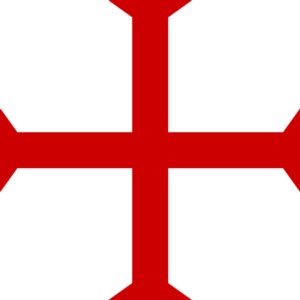
I was contacted by Chris Cunnyngham a few days ago with this interesting story.
Although I tend to stay away from conspiracy theories (for my own sanity) the story title itself got me interested enough in reading the full post.
‘Templar crucifixion nail’ found in imaginary country – but is it a hoax?‘
Here is the brief summary from Chris:
So, boiled down, this is what we have: A man buys an old building, pronounces it a nation, secedes from his country, proclaims himself Prince, conducts archaeological digs and claims to have found three Templar skeletons and a nail that may have been a venerated relic of a crucifixion. And if it was a crucifixion nail it was one of thousands available.
Sounds a little sketchy.
I couldn’t agree more with Chris on this one. It’s obvious that tourism is the main goal here.
Full source: Examiner
4 commentsMedia outlets are reporting that archaeologists on the “island of Ilheu de Pontinha, just off the coast of Madeira” have found a four-inch Roman nail from the time of Christ’s crucifixion buried with the skeletons of what appear to be three Templar Knights.
That’s a pretty juicy story with a lot of popular elements. Ask Dan Brown.
I’m not a journalist but since I play one on the Internet I thought I would try to make sense of this story using the famous Five W’s of journalism. The story takes an interesting turn at Where.
Let’s look at the basic elements.
WHO
The Templars – The legendary Christian Knights founded in Jerusalem in 1119 to protect Christian pilgrims after the first Crusades captured the city. The Templars rose from monastic poverty to become one of the greatest powers in Europe before being wiped out to thwart their growing influence and acquire their valuable land and holdings. The Templars were known to venorate relics and were thought to have a piece of the True Cross from the crucifixion of Jesus as well as the head of Saint Euphemia of Chalcedon*, among other items.
The Templars are also the go-to guys for much of modern conspiracy lore and popular novels and movies like The Da Vinci Code have only raised their profile. They have been linked to almost every conspiracy imaginable and a cottage industry has cropped up concerning their secrets and lore.
WHAT
The Nail – Reportedly found in a decorated box and described as well cared for with a “peculiar finish” that may be the result of being handled often. The description heavily implies that it was treated as a holy relic.
Nails from crucifixions were considered powerful magical and medical amulets in ancient times and due to the widespread practice of crucifixion there was no shortage of them. Archaeologist Joe Zias writes that “tens if not hundreds of thousands of individuals were subject to this cruel and humiliating death” over a 800 year period. Six thousand followers of Spartacus were killed by crucifixion in one fell swoop in 71 BCE.
The skeletons – Three skeletons with swords, with one sword bearing a marking of the Knights Templar, have been reported. No word on the condition of the bones and no pictures have been released of the remains or crypt, if any.
WHEN
Crucifiction Era: 400 BC to 400 AD
Crucifixion of Jesus: 29 to 36 AD
Templars: 1119–1314 AD
WHERE
And here’s where it gets interesting. News reports are placing this find on “the tiny isle of Ilheu de Pontinha, just off the coast of Madeira.” A quick check of Google maps brings up nothing but a general search leads us to the “Principality of the Pontinha” a “self-proclaimed country founded by Prince D. Renato Barros.” Renato Barros announced his secession from Portugal in a 2007 press release and headquarters his country in the “Fort of São José.” It seems that all three of these entities – the Ilheu, the Principality, and the Fort – are the same thing – a precarious pile of rocks on the side of a jetty off the southern city of Funchal that may indeed be an old fort. It is not an island anymore though it could have been on at one time.
Read the full article: Examiner




